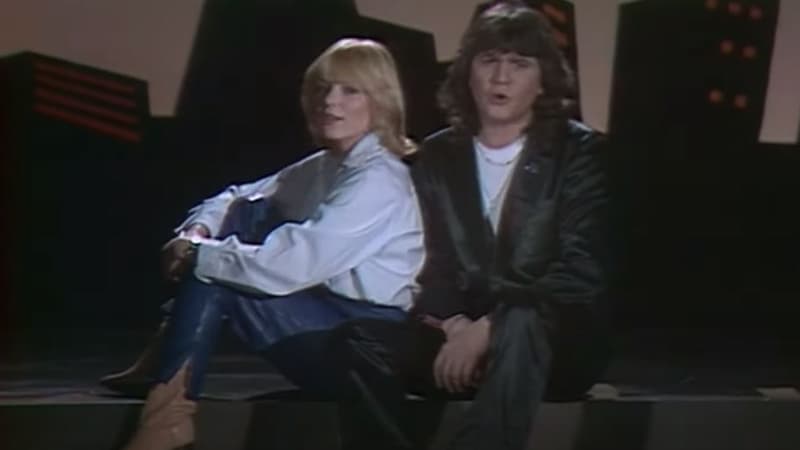when we come to town, A boy like no other, SOS a landowner in distress… the tubes starmania entered pop culture. However, the story of the rock opera by Michel Berger and Luc Plamondon, which returns to the musical Seine on November 8, is ultimately little known. We tell you how this crazy project was born and why, more than 40 years later, it is more current than ever.
• How was the project born?
It was Michel Berger who first dreamed of composing an American-style rock opera. The musician “has always considered that the French could do the same as the Americans”, says François Alquier, author of starmania adventure (Exclusive Editions). Michel Berger is convinced of this, there is an audience for this and it can work.
First he wants to make a rock opera around the story of Patricia Hearst, this heiress, granddaughter of a press tycoon kidnapped in 1974 by far-left terrorists, and who ends up embracing their cause. So the project is called Angelinebut it will never see the light of day.
France Gall, who discovered Luc Plamondon’s style through Diane Dufresne, thinks of him for this adaptation. Michel Berger loves his writing, his themes, his violent twists. He is so excited that he calls her in the middle of the night, oblivious to the time difference between France and Quebec. The two authors meet and begin to work on what will be starmania.
• What is “Starmania” about?
Berger and Plamondon place their rock opera in a dark future and evoke themes such as “the desperation of youth, trash stardom, terrorism, ecology”, François Alquier evokes. The story takes place in Monopolis, the new capital of the West, a victim of the Black Stars, terrorists whose leader Johnny Rockfort acts under the influence of Sadia, a high-society student agitator.
We find ourselves in this universe with Zéro Janvier, a multimillionaire launched into politics who is running for president, to whom at the time we lent a resemblance to Silvio Berlusconi or Bernard Tapie. Three love stories are woven in this context, that of Marie-Jeanne, an automated waitress, in love with Ziggy, “who loves boys”, as the song says. That of Zéro Janvier and Stella Spotlight, a former movie actress, and the passion of Johnny Rockfort and Cristal, “star host of a TV show called Starmania.”
• Did it work at the time?
The success of starmania it is far from immediate. Sales of the album, recorded in mid-1978, released before the show, in October of the same year, did not take off. The project stands out in the music scene of the time, in full disco madness. And then apart from France Gall, there’s not really a headliner on this album. Daniel Balavoine is still far from living up to his glory. As for Quebecers Diane Dufresne and Fabienne Thibeault, they are not stars in France.
It will take a special program by Marie-France Brière starmania on Antena 2 to launch the album. The show, which has been presented since April 10, 1979, for 4 weeks at the Palais des Congrès in Paris. And despite the killer reviews, they sold out. There will be no recording of these performances starmania. “We don’t think about that”, will deliver the ex-CEO of Warner Bernard de Bosson to François Alquier.
Two other versions of starmania will see the light, one in 1988, the other that will be reproduced from 1993 -a year after the death of Michel Berger- until 2000. Five million spectators thus saw one of the versions of starmania in the entire world.
• Why did it work?
The spectacular rock opera, majestic and futuristic at the same time, marks the spirits and opens the way to a new era of visual spectacle. “It was Tom O’Horgan, director of Jesus Christ Superstar and Hair, who directed the staging of Starmania,” says Bernard Jeannot-Guérin, professor-researcher at the University of Angers.
• Why it’s still terribly relevant
One would be tempted to qualify the themes evoked by Luc Plamondon and Michel Berger in starmania visionaries, as they resonate today in a very contemporary way,
However, recalls Bernard Jeannot-Guérin, “Luc Plamondon and Michel Berger had perfectly understood his present. They gave this present, which they were analyzing in 1978-79, a form of timelessness.
“There is an extremely futuristic dimension to the aesthetics of starmania. There is a science fiction idea. On the other hand, although the themes developed in 1978 speak to us enormously today, linked to politics, attacks, eco-anxiety or gender issues, they were themes that were already emerging in the 1970s.
Issues of transidentities begin to appear. Terrorism also raged in the 1970s, when Europe plunged into the “years of lead”, and in Germany and Italy, movements such as the Red Army Faction or the Red Brigades swept through. “Berger and Plamondon have only systematized the great themes of human tragedy, through the prism of these social themes,” says Bernard Jeannot-Guérin.
As for eco-anxiety, it is also beginning to emerge, in the midst of the Cold War, when anxiety about nuclear weapons is very present.
Source: BFM TV


